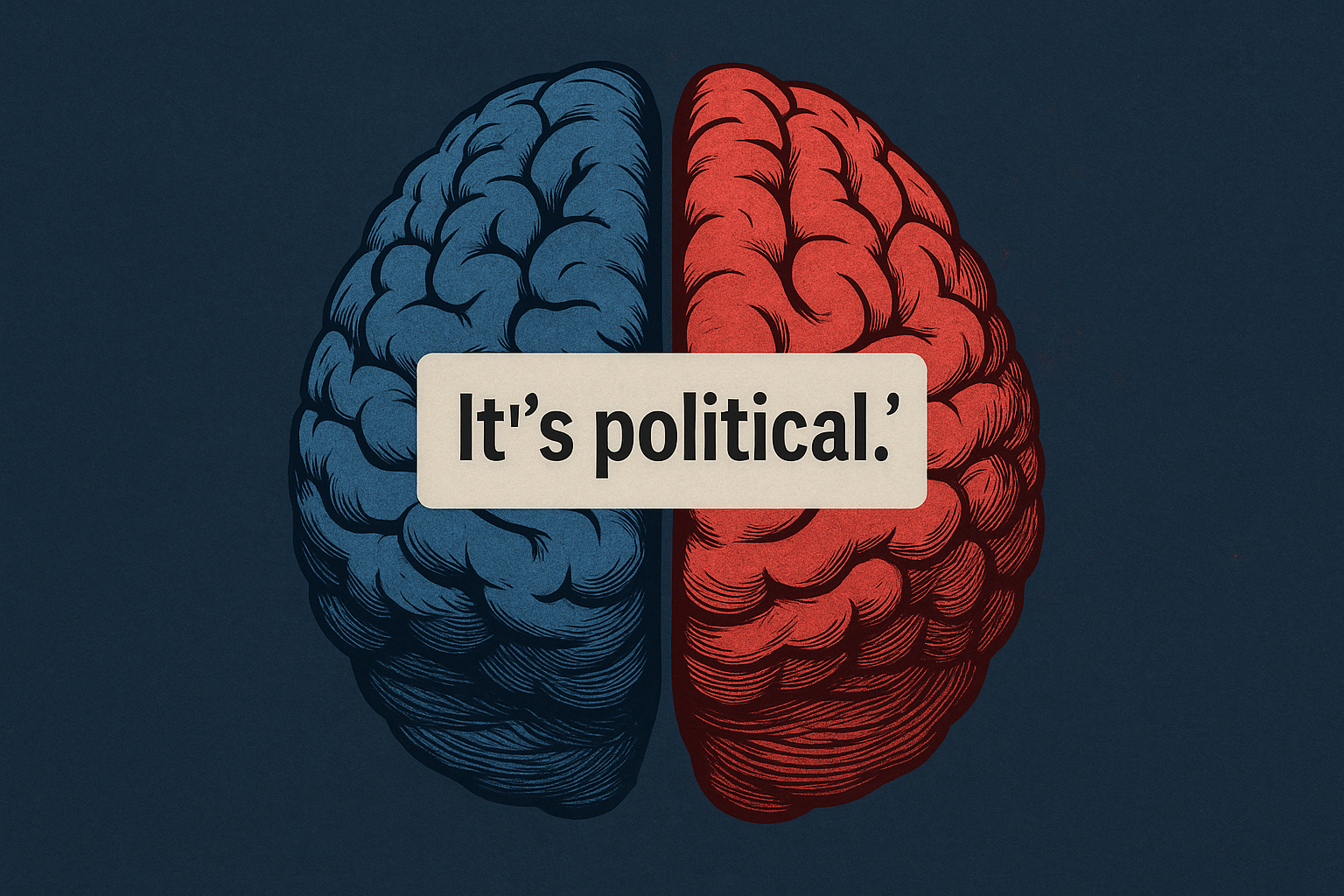When it comes to dealing with issues of mental health in the workplace, perhaps some hesitation comes up. What is an inclusive leader to do who is wanting to be supportive of colleagues and also not wanting to intrude? We are drawn to this story of an inclusive leader. As we talked, it was clear that this leader had built a climate of belonging over time in multiple small but concrete ways. Because of this work culture, when a moment came when a colleague needed to be vulnerable, they felt safe to do so. And that moment of vulnerability created a safer, more supportive, more productive work environment for everyone. Let’s dive into the specifics.

The Context
This person is in charge of a global team of 12-14 people from different countries and different companies, with members from Asia, Europe and the United States. For the majority of the team, English is their second, third or fourth language. This leader says:
With such a small and unique team, it’s important to keep aware of each of the participants both during meetings as well as in between those meetings. Ensuring the team members listen and pause to fully understand is necessary, especially when someone is trying to find the right words or way to say something in English. Therefore, reaching out to the team to check in as a whole is necessary, but also to individuals to allow for different, and potentially confidential, conversations.
Notice the specific instances of building trust and meeting people where they are. The work culture is to take time in conversations, knowing that people might need time to find the right words and to understand what is being said. As inclusive leaders looking to reduce cognitive biases, we know that urgency fuels expediency bias.Taking time is a critical step. This leader takes time in two ways – during meetings and then again in individual conversations, recognizing that checking in is a key function of their job. It is not something this leader does only when they have time – taking time is their regular expected way of doing business.
That sets an important foundation for individual colleagues and the team to grow from. This leader continues to say:
Over the years, I’ve learned how each person operates and what roles they like as well as where they feel they perform best. This is a benefit to the whole team, but also helps me lead in a way that works for each of them and gains their willingness and desire.
Dealing With Conflict
They then described another incident, one that every leader encounters. During a meeting, one participant was getting challenged by a team member which was negatively impacting them. At that moment, the leader stepped in and said something. Over the course of our work lives, we have probably been all the roles in this situation – the person crossing the line, the person receiving the impact and the leader in the room. As the leader, what we do matters. What matters most is doing something while it is happening to show that this behavior has been noticed and needs to change. It doesn’t need to be a huge interaction, it doesn’t need to be a punitive moment, but something needs to happen to change the dynamic. Whether we do this or not has lasting ripple effects across our teams and our organizations.
Dealing With Struggle
In this instance, this small act of speaking up, coupled with the environment already built, would prove to be crucial. This leader continued their story by explaining that in a later meeting, they noticed that this same team member was crying.
While none of the others noticed or said anything, I silently encouraged them to step out and take a break so as not to draw attention to or embarrass them. After a minute or so I stepped out while the rest of the team continued on with the work. I found my teammate and let them know to take their time and asked if they needed anything or how I could help, if at all.
Let’s break down all the powerful moments of inclusive leadership here. First, this leader noticed what was going on, and noticed before other people did. They were paying attention to the room. Next, they silently encouraged the person to step out. Then, they gave the team member a minute or two instead of immediately speaking to them. Their first words were to “take your time”. Again, we see this acknowledgement that there is no rush. Get your breath. Pause for a moment. Or as long as you need. Finally they offered their support and also recognized that they might not know how to help. The “if at all” is a crucial gesture, a recognition that the leader in charge might not have a solution, or require a solution but is willing to help.
In the next moment, this team member said “because I trust you and you care” and then chose to reveal a mental health diagnosis and explained that sometimes “things just hit me.”
In the middle of a hard time for this team member, the leader did not push urgency or require answers or their presence in the meeting. Instead, this leader offered support. Let’s also point out what this leader is not saying. There is no tone of “oh what a hassle” or “this person is a flake” or “this really made us fall behind in the meeting” or anything other than the belief that their job is to support the team members. This revelation of their colleague’s mental health situation and how it impacts them in the workplace could only have come as a result of the many indications of inclusivity, respect and safety that this leader had built along the way. None of them were large gestures in themselves, but all of them combined to create a solid culture where it could be ok to say vulnerable things and know that you will be supported.
The leader went on to say that this person has been more collaborative since and believes that it is a direct outcome of them feeling seen and heard.
Navigating External Attribution Bias
In this situation, this leader was able to mitigate the cognitive bias of external attribution – where we attribute someone else’s actions to internal forces and our own to external forces. With a different type of leader, facing a similar situation of noticing someone crying in a meeting, this bias might lead to thoughts of “they are too emotional” or “difficult” or some other judgment on a person’s character, instead of what was actually happening – their body had a response. No different from the way fluorescent lighting can cause a migraine. This inclusive leader mitigated their bias and instead stayed curious, asking not “what’s wrong?” but “what can I do?”
For many of us, we learned that needing help is a sign of weakness. And that asking for help is an even larger sign of weakness. We think this even though we know that everyone is going through something, and everyone could probably use some help. This is even more true in our professional lives, where we are being evaluated on our performance and our financial security depends on keeping our job. There’s a lot at stake and revealing something that anyone might see as a weakness is a risky thing.
Inclusive leaders can make asking for help easier, using any of the examples from above. Taking time to build understanding both collectively and individually with team members. Calling out inappropriate behavior in the moment in a respectful way. Noticing what’s going on with team members and in meetings. Checking in with colleagues. Asking how we can help rather than asking what’s wrong. Recognizing bias and questioning ourselves when we have judgements about colleagues.
With mental health, we can also proactively model ways to de-stigmatize mental health. We are seeing this more and more with celebrities and athletes becoming more frank about their mental health struggles — such as tennis player Naomi Osaka or NBA champion Kevin Love. This awareness helps to build our understanding that mental health challenges are a part of life and moreover, they are a part of life that can be navigated with the right support.
As inclusive leaders, we can bring these ideas into the workplace. We can talk about what we do for our own mental wellness. We can bring those practices into the workplace. Since time is key for mitigating bias, we can bring time into our interactions by modeling not jumping from meeting to meeting or decision to decision. By starting meetings with some sort of grounding or centering practice – a brief pause at the start of every agenda. We can pay attention to and interrupt language used casually that is a mental health diagnosis or a slur – such as saying “crazy” or “I’m so OCD” because, at the end of the day, words construct our perceptions and realities. We can create the conditions that foster mental wellness by starting with a foundation built on inclusive language.

Percipio Company is led by Matthew Cahill. His deep expertise in cognitive, social, and workplace biases is rooted in the belief that if you have a brain, you have bias®. He works with executives to reduce mental mistakes, strengthen workplace relationships & disrupt existing bias within current HR processes, meeting protocols and corporate policies. Matthew has demonstrated success with large clients like LinkedIn, Salesforce and dozens of small to mid-size companies looking to create more inclusive workplaces, work smarter, generate more revenue and move from bias to belonging®.





